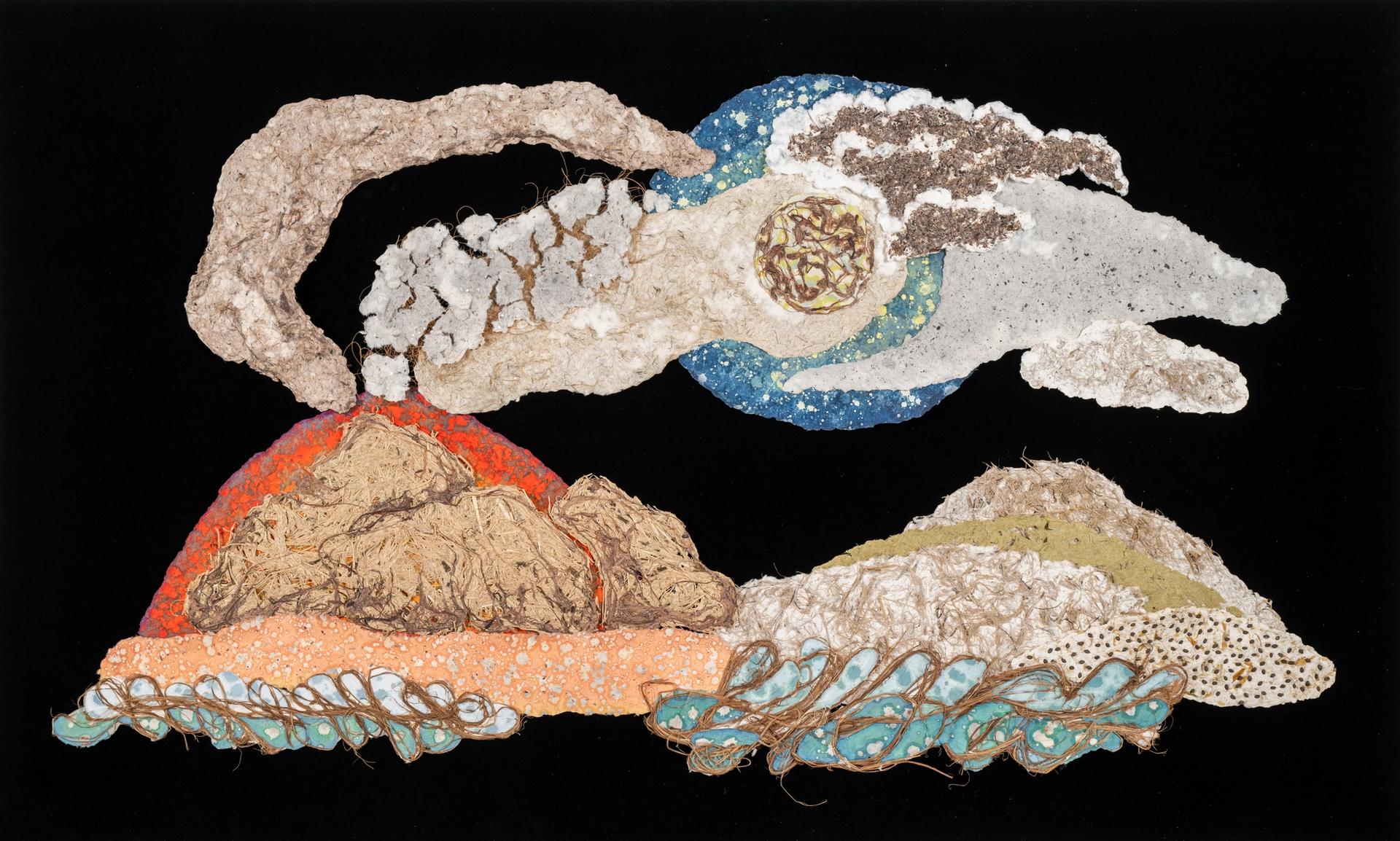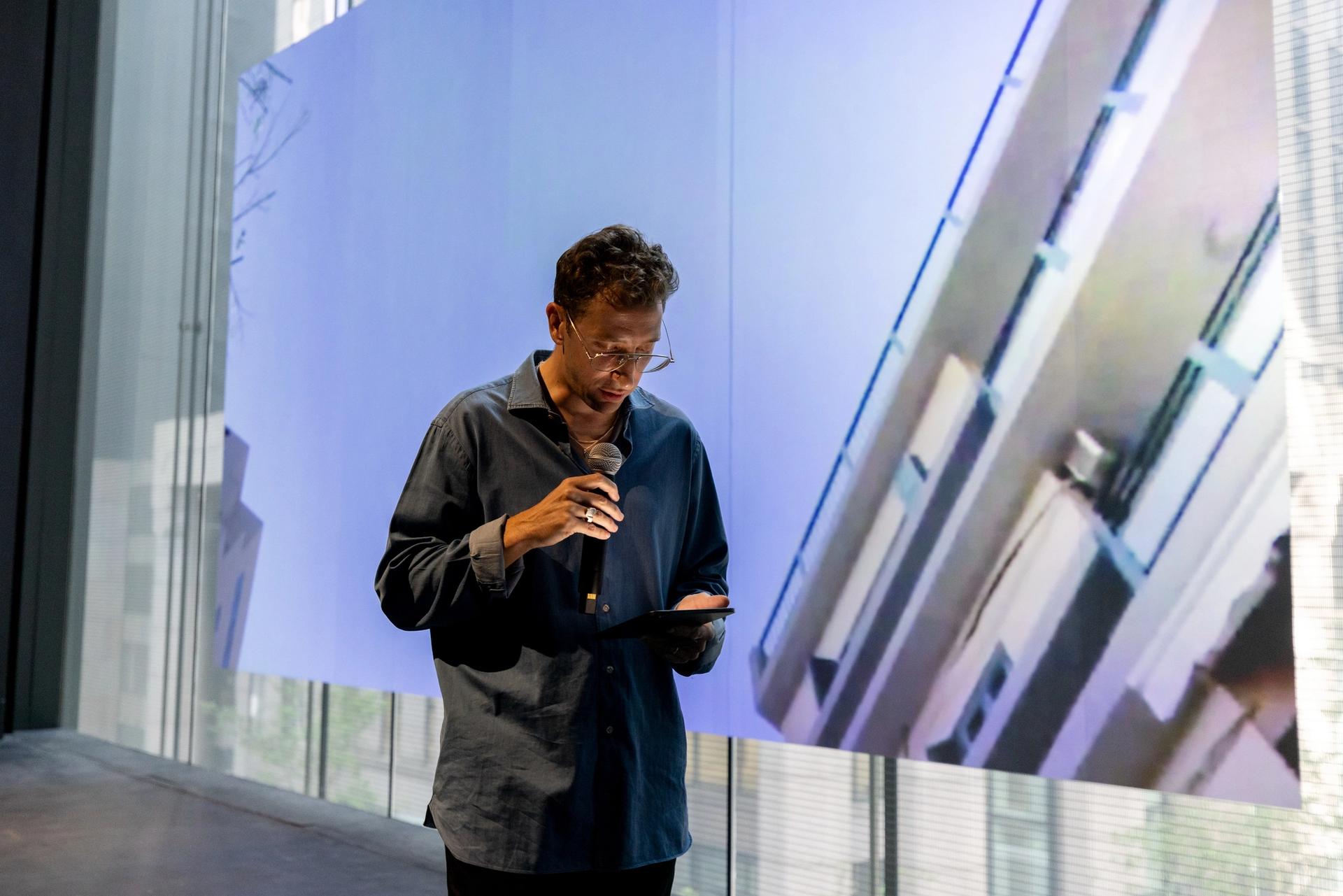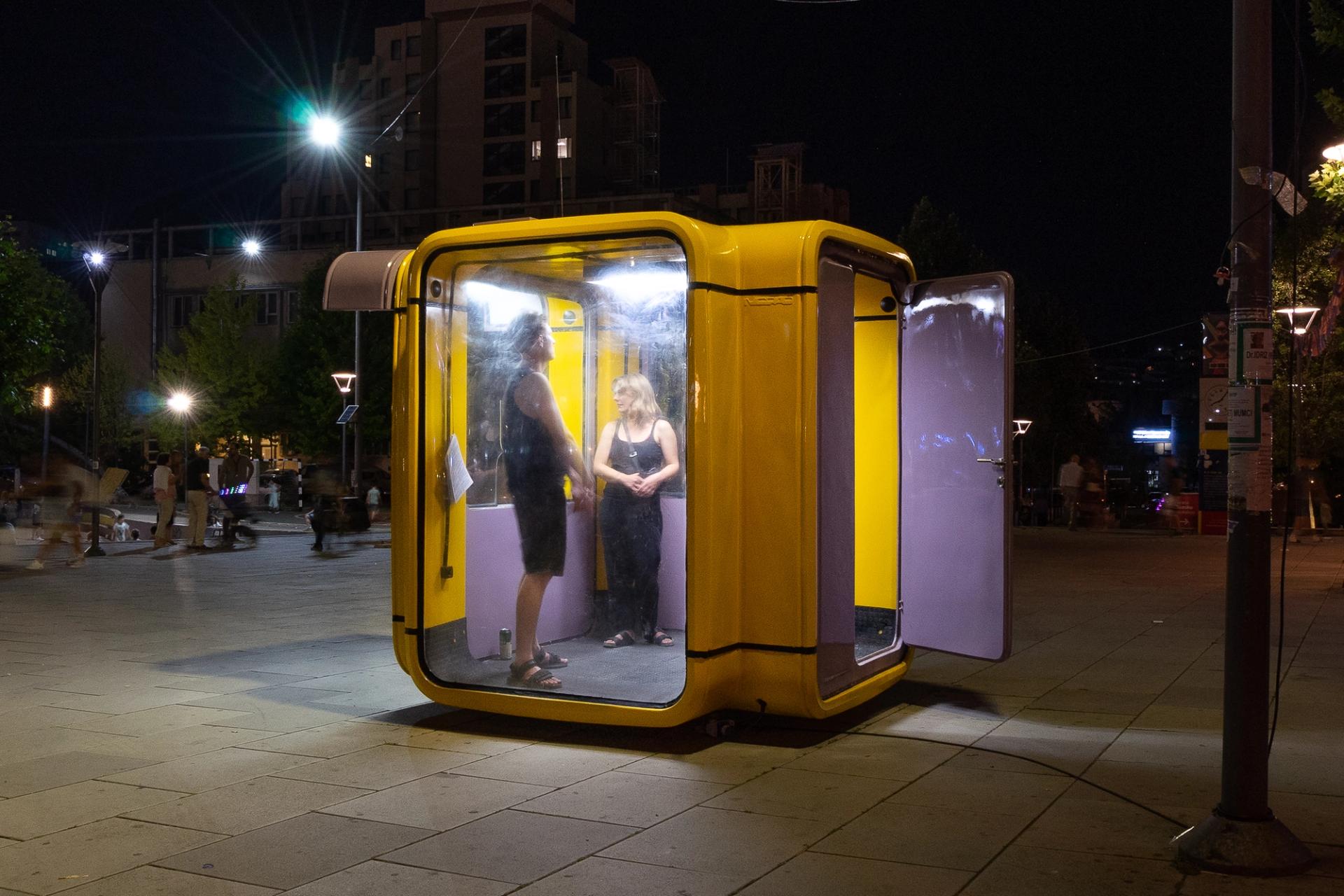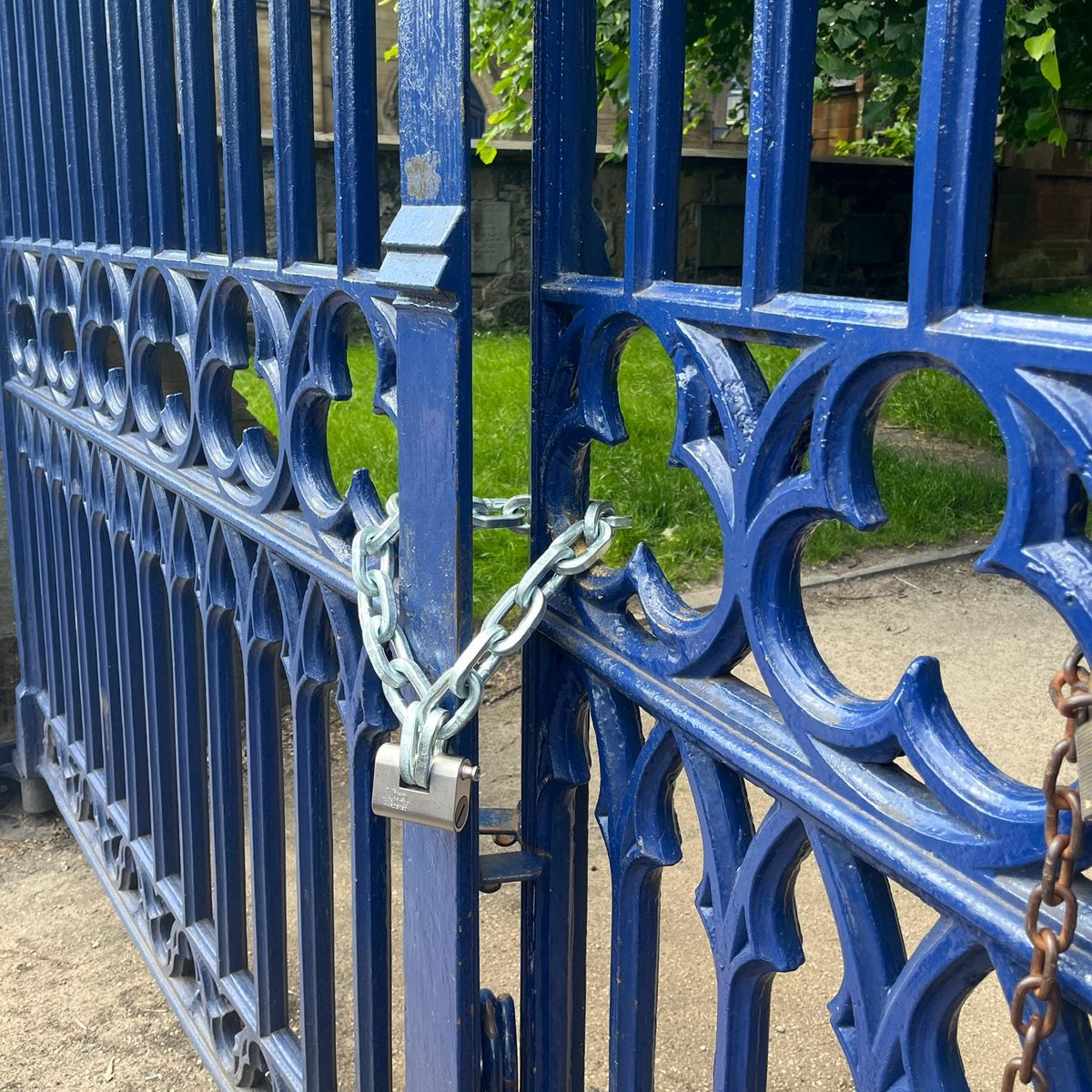There is no overarching theme to this year’s Glasgow International. Instead director Richard Birkett prefers to emphasise what he describes as the “collectivity” and “polyvocality” of the Glasgow arts scene—its arts and community organisations, artist run spaces, artist and independent curators—and to demonstrate how this ecosystem connects with artists worldwide.
Combined with some great programming, this refreshing liberation from curatorial shoe-horning has resulted in one of the strongest and punchiest editions in recent years. The tenth Glasgow International may lack a title, but there’s no shortage of common and crucial concerns reverberating through both the local and the global work that is currently occupying the city’s disused church halls, public libraries, car parks and tenement blocks as well as its more official gallery spaces.
The catastrophic impact of conflict and the legacy of colonialism pervades much of this festival. Ramshorn Cemetery is the resting place for the city’s wealthy 18th- and 19th-century merchant class, many of whom got rich trading in goods produced by slaves and/or were slave owners themselves. Many also served on Glasgow City council, which currently runs and maintains the cemetery. Now with brutal directness the American artist Cameron Rowland denies access to these deceased dignitaries by wrapping a hefty chain and padlock around the cemetery’s elegant Victorian Gothic gates. It’s a simple act that carries a huge and resonant heft. How Glasgow council responds to Rowland’s unauthorised closure of one of its historic public tourist sites remains to be seen.

Enzo Camacho & Ami Lien, Social Volcano (lava moon) (2023) Image: courtesy of the artists. Photo by Wong Pak Hang @ Studio Lights On
More Victorian splendour is disrupted over in Glasgow’s Gallery of Modern Art (GoMA), originally built in 1778 as the magnificent townhouse of William Cunninghame, a Glasgow Tobacco Lord who made his fortune in the transatlantic slave trade. Enzo Camacho and Ami Lien have filled GoMA’s lofty neo-Classical central hall with Offerings for Escalante, a multimedia outpouring of paper sculpture, stop frame animation and projected film, all made as a result of the artist duo’s research into the Philippine island of Negros, where Camacho’s mother is from, and which has a plantation-based sugar industry with historical links to Glasgow. The artist duo focus their exhibition on the generational trauma of the 1985 Escalante massacre against protesting farm workers, most notably with an hour-long experimental documentary that intersperses horrific testimonies from survivors with abstracted footage of over-layered plant forms, processed using chemicals extracted from the plants themselves.
At the Hunterian, the Glasgow-based artist Cathy Wilkes turns her sights on Ulster to bear witness to the often disregarded effects of violence in a sombre and intensely atmospheric installation of new sculpture, painting and archive materials. Commissioned by the Imperial War Museum, the show is uncharacteristically specific. Wilkes makes direct reference to her childhood in Belfast, focusing specifically on the case of Emma Groves, a Belfast woman blinded by a rubber bullet fired into her face by a British soldier as she looked out of her living room window.
In what is the central image of the exhibition, Wilkes presents the bullet coming out of the gallery wall with devastating effect on a recoiling life-sized sculpture. It’s a timeless image of horror that also speaks directly to the current atrocities in Gaza as well as what took place on a November morning in West Belfast in 1973.

Lawrence Abu Hamdan, Air Pressure (2021), documentation of the performance at the Museum of Modern Art, New York in 2023 Image: Courtesy of the artist and MoMA
Gaza also haunts Air Pressure, Lawrence Abu Hamdan’s live performance lecture, which offers a meticulously researched—and often excruciating—account of what it is like to live under the constantly violated skies of Beirut as they roar and buzz with the incessant sound of Israeli jets and drones. Between 2006 and 2021 there were over 22,111 instances of illegal flights in Lebanese airspace and Abu Hamdan describes himself as an “earwitness,” using his own recordings as well UN data to log and present these incursions in sound and projected images. In doing so he demonstrates the corrosive effect of this aural assault on the mind and body, as well as providing a chilling indictment of the collusion of so many countries, including the UK and the US, in the ongoing arming of Israel.
Many of the works are especially effective when wider social, political and historical events are harnessed to an artist’s personal experience. Mina Heydari-Waite’s film and sculptures at Offline in Glasgow’s Southside conflate family footage of picnics and outings in 1990’s Iran with the location of the British Indo-European Telegraph line, part of the apparatus of Empire, which ran across Iran for more than half a century.
Over in the cavernous space of Tramway, Delaine Le Bas—shortlisted for this year’s Turner Prize—runs riot with an angry extravaganza of embroidery collages, embellished mannequins, sloganeering banners, tented structures and soundscapes, presided over by a giant effigy of a snake-brandishing Minoan Goddess. In this highly wrought—and somewhat overwrought—mashup of myths, symbols and Mise-en-scènes the artist aligns her first-hand experience of prejudice as a British Romani person with a plethora of ‘outsider narratives’ ancient and modern, and puts them firmly in the context of present day concerns surrounding land rights, border control, the housing crisis and environmental breakdown.
Intensely intimate personal histories form the subject of Alexis Kyle Mitchell’s poignant and moving film The Treasury of Human Inheritance in which she charts her family’s experience of myotonic dystrophy, a genetic disease that becomes more virulent with each generation. As well as touching home movie footage of the artist’s family—many of whom are now deceased—The Treasury of Human Existence is accompanied by work on systems of nourishment and care (including a vacuum packed sachet of oxtail stew) made by Kyle Mitchells’ s artist friend Ima-Abasi Okon. The sustaining, supportive Glasgow art scene is also in evidence throughout, with the film featuring a synthesiser soundtrack made by the artist Luke Fowler and the composer Richy Carey as well as an appearance by the Turner Prize-winning artist Charlotte Prodger, who walks along an ancient Coffin Road along the west coast of Scotland.
Communities from Scotland’s recent past are celebrated in the solo exhibition of the photographer Sandra George, organised by the Glasgow School of Art exhibitions, which is one of this Glasgow International’s revelations. Born in Jamaica, George moved to Scotland as a child and was a community worker in Edinburgh from the 80s and her warm, empathetic, beautifully composed images document the people and organisations George worked amongst, including Shakti Women’s Aid, the woman’s refuge at Victoria hostel and the Edinburgh BlindCraft mattress factory. George also photographed herself as a mother with her son Tyler and privately experiments with her own image in a striking Cindy Sherman-esque series of early 1980’s self-portraits in which she sports a variety of different ‘looks’. When George died in 2013 her work had not been exhibited, but now she is getting the recognition she deserves.

Susan Philipsz and Radio International Collective, Radio International (2022) installation view at Manifesta 14, Prishtina. Image: Courtesy of the artists
Glasgow’s long cultural reach owes much to the enduring stature of its art school. Now Susan Philipsz—another Glasgow-born Turner Prize winner—has led a collaboration between her students from Glasgow School of Art and those she also teaches at the Dresden University of Fine Arts to produce Radio International, a series of radio transmitted sound works inspired by Jean Cocteau’s 1950 film Orpheus. These are experienced sitting inside a small Opel car that has been driven from Dresden and is now parked in the city centre’s King Street car park. Cocteau’s protagonist was obsessed by the coded messages and abstract poems picked up by his car radio, and likewise Radio International comes through the airwaves and into the Opel, with each of the student’s sound art pieces interspersed with outer space recordings of the pulsing sound of neutron stars.
Like so many of the best works in this Glasgow International, the experience is both networked and collegial, embedded in the social and political specificity of the city while at the same time offering limitless horizons.
• Glasgow International, various venues in Glasgow, until 23 June



